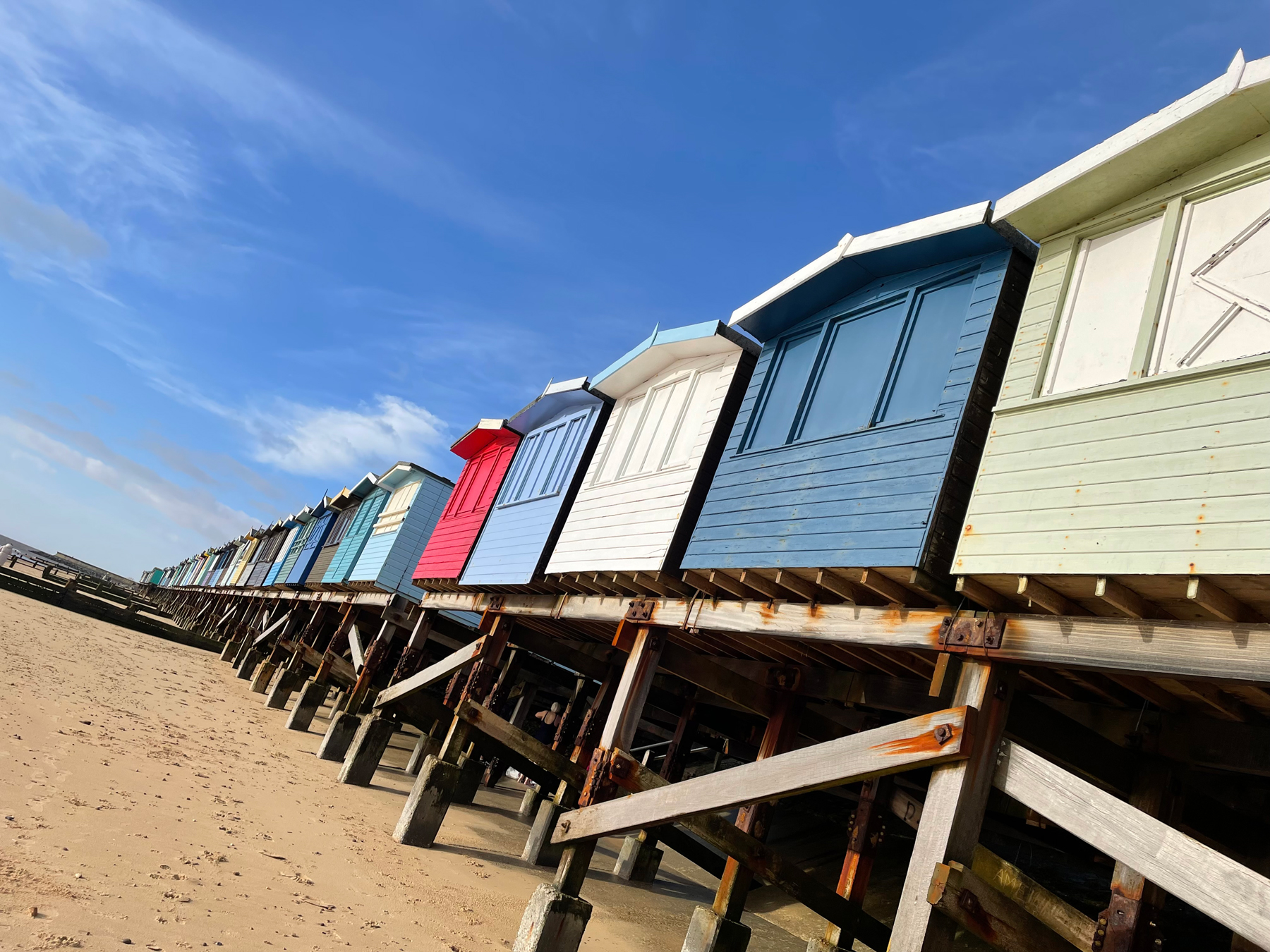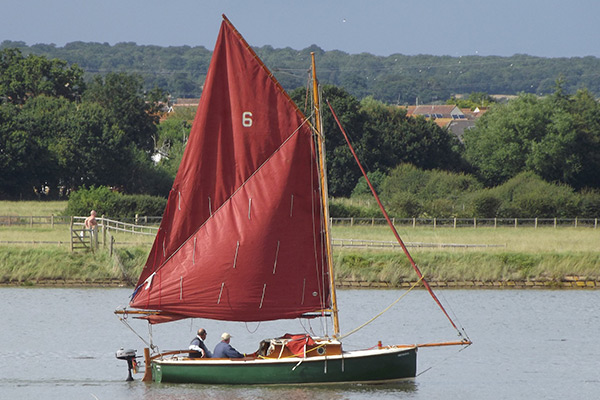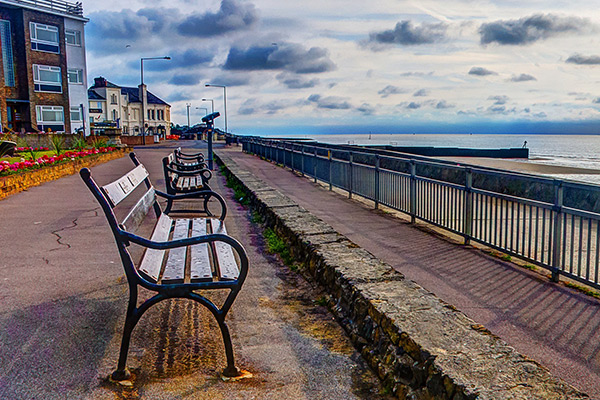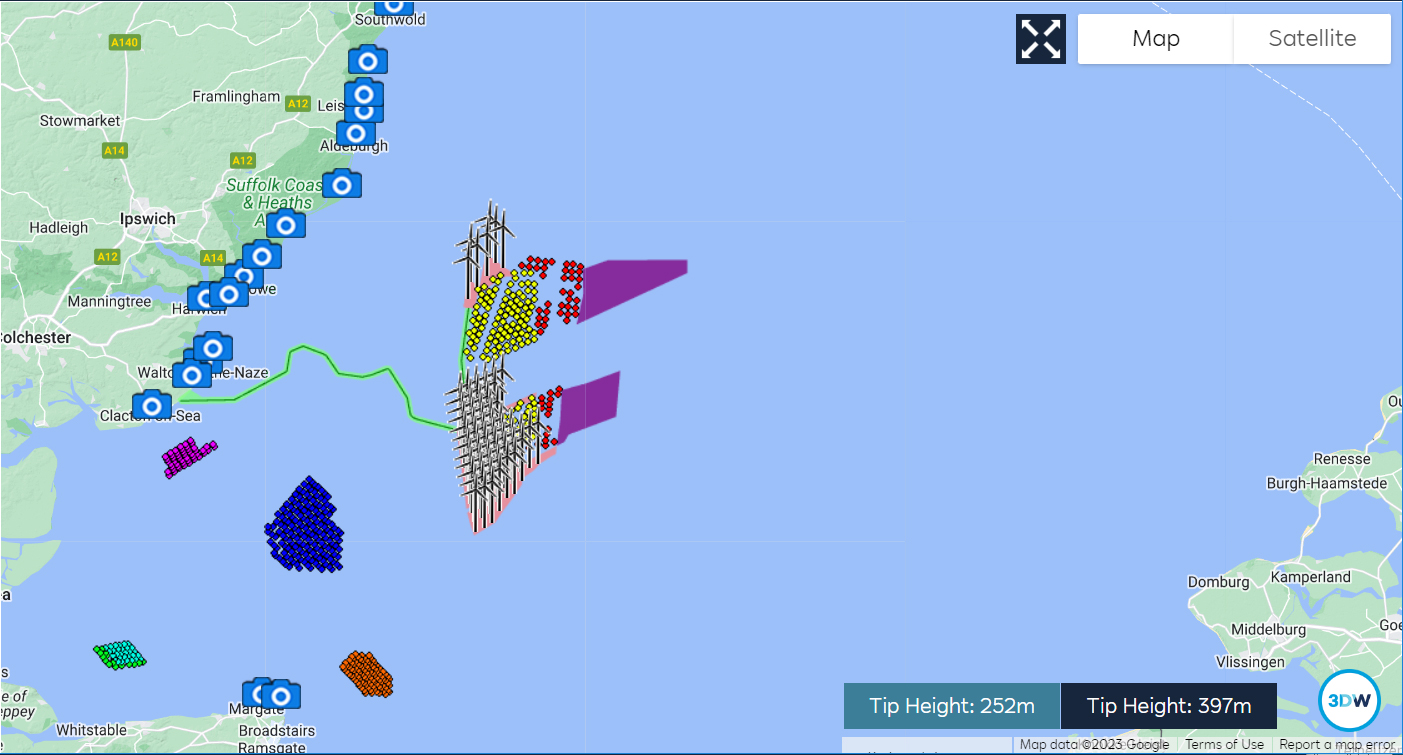The information on this page was correct at the time of publishing (July 2023). The project has since evolved and we would encourage you to read our September update for more information.
Project-wide impacts
The North Falls PEIR assesses a wide range of potential impacts for physical, biological and human environmental topics for the whole project lifecycle. This page takes a high-level look at the project-wide chapters not covered elsewhere on this consultation portal namely: human health, seascape, landscape and visual; landscape and visual, and tourism and recreation.
For full details on each of the specific topics you can click on the relevant chapter link opposite.

For more on the project-wide impacts, including visual impacts and to see computer-generated visualisations you can read the following PEIR chapters:
View Chapter 28 Human Health View Chapter 29 Seascape, Landscape and Visual (SLVIA) View Chapter 30 Landscape and Visual (LVIA) View Chapter 31 Socio-economic View Chapter 32 Tourism and RecreationFeedback Questions
Of those who answered this question the vast majority (more than 80%) responded yes to this question. A typical 'yes' response was: I'm very supportive of all projects which help to utilise more green sources of power and help the UK become more self-sufficient. Around half of those who stated yes said the yes was conditional on changes, those changes primarily being with an offshore grid connection or if the onshore infrastructure was located elsewhere. Around 10% were not supportive and a similar number did not know if they were supportive or not due to the fact that they needed more details.
Human health
As this is a topic that has relevance across the project, the assessment of human health impacts has drawn on information from several PEIR chapters including those covering marine water and sediment quality; ground conditions and contamination; onshore air quality; water resources and flood risk; noise and vibration; traffic and transport; socio-economics; tourism and recreation, and climate change. The assessment considered potential impacts of North Falls on noise, air quality, ground and/or water contamination, physical activity, journey times and/or reduced access, employment, electro-magnetic fields and wider society.
These issues have been considered throughout site selection and planning and by the specifying the use of certain construction methods, traffic management and cable design to ensure the project does not have significant effects on human health during its lifecycle.

How will the project look
To enable people to see how the offshore wind farm could look from shore, we have prepared this 3D interactive visualisation model with viewpoints from 17 different onshore locations. The model features the two different turbine sizes as well as options for different weather conditions. By toggling between the options you can see a range of the potential visual impacts.
Instructions on how to navigate the model have been included to help you navigate the options.
Seascape, landscape and visual
The study area for seascape, landscape and visual impacts was defined as a 60 kilometre radius around the proposed array areas, including parts of the Thames estuary, Suffolk, Essex, and Kent. The assessment is based on the maximum potential turbine size to ensure it was future-proofed in case of technological advances.
North Falls is predicted to impact views from certain Suffolk coastal areas such as Sizewell Beach, sections of the Suffolk Coast Path and Suffolk Coast and Heaths AONB due to visibility of its turbines during operation influencing the seascape and landscape character.
Photomontages available in Volume 2 (Figures) of Chapter 29 to enable those with an interest to see how the wind farm could look. There is also a 3D computer-generated interactive model (link above) with 17 different viewpoints included to provide further visual examples in different conditions.

Landscape and visual
In assessing the landscape and visual impacts of the onshore elements of North Falls, those factors considered included potential changes to landscape elements and fabric; changes to landscape character; changes to landscape designations; and changes to visual amenity.
Mitigation measures were incorporated as part of the site selection process, as well as in the choice of construction methods, through proposed habitat reinstatement and within the project design. Additional landscape mitigation and biodiversity enhancement, which includes new hedgerow and woodland planting, will also be undertaken. Further details on these can be read in the project's Design Vision.
For more information about the project's design strategy for the onshore substation, please see the PEIR document:
View Substation Design VisionSocio-economics
In terms of socio-economics, the potential direct and indirect benefits have been reviewed as well as adverse effects on: economy, health infrastructure, social and community infrastructure, imports and exports, volume and value of fishing catch and mineral resources.
The benefits predicted for the project include increases in 'gross value added' (GVA) (the value of goods and services of the local and national economy) and job-creation through use of the local supply chain and direct and indirect employment. The adverse effects relate to pressure on local infrastructure, disturbance (noise, air, visual), plus potential disruption to fishing and minerals. For these adverse effects, a wide range of mitigation measures will be implemented during construction, such as vehicle delivery time and routing restrictions as well as ongoing stakeholder engagement, and during operations through design to reduce visual impact.
Tourism and recreation
Marine, coastal and onshore tourism and recreational assets in Essex and Suffolk were reviewed for all project phases. For the project's construction phase impacts assessed were road traffic disruption, a reduction in tourist numbers and spending, and the availability of holiday accommodation due to non-resident workers. During the project's operation, impacts assessed were related to negative perceptions of offshore wind farms.
The project's comprehensive site selection process aimed to minimise impacts on the natural surroundings, on designated areas, ancient monuments or listed buildings, and tourist destinations. At the start of the project underground cables were specified, and other mitigation measures proposed include a rolling construction programme, implementation of flexible management plans and good communications throughout any works.

Climate change
The project was assessed for greenhouse gas emissions throughout its lifecycle with the main emissions sources being embodied emissions from within onshore and offshore materials, and those from marine vessels, road traffic, and construction machinery. Mitigation has been incorporated into the project design to reduce, eliminate, and/or compensate for emissions. Given the emissions reduction the wind farm will represent when compared with electricity production from fossil fuels, North Falls is predicted to have a significant benefit in relation to climate change.
Feedback Questions
This question gave respondents the opportunity to add or reiterate points and so included a wide range of inputs. There were those wishing the project luck and urging the team to 'get on with it' and others taking the chance to further state their preference for an offshore grid connection. There was reference to the need for North Falls to continue to work closely with Five Estuaries; to potential community benefits, as well as specific questions on smaller scale wind turbine options, consultation with the elderly and landowner issues. All feedback form responses will be collated with the other consultation inputs received (emails, letters, postcards and via the website) and considered together as the proposals are further refined and matured.
